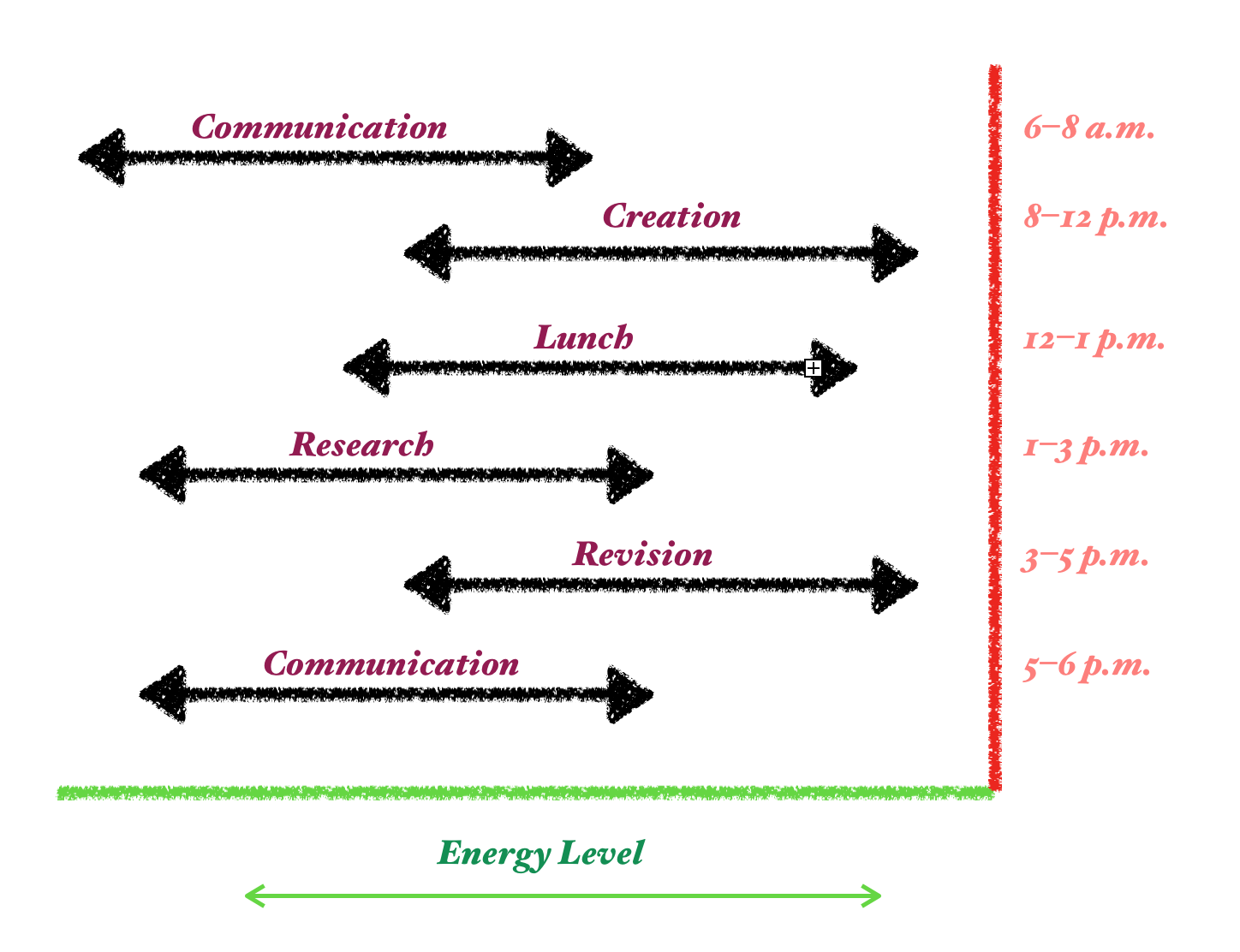As the mother of a toddler, I have been reading a lot of parenting books lately, and I have been struck by a notion introduced in a few of them—that of the importance of creating a daily rhythm. In Simplicity Parenting: Using the Extraordinary Power of Less to Raise Calmer, Happier, and More Secure Kids, for instance, Kim John Payne suggests that “by surrounding a young child with a sense of rhythm and ritual, you can help them order their physical, emotional and intellectual view of the world.” According to him, cultivating a daily rhythm provides a strong foundation for children, giving them the security to explore their world confidently and allowing their creativity to flourish while keeping them grounded in home values and traditions.
I started to wonder: How might a daily rhythm be beneficial to my adult life—and more specifically, to my adult work life?
I began implementing a daily work rhythm where I scheduled my day according to ebbs and flows, dedicating periods of time to different tasks that best suited my energy levels and creative rhythms. I quickly realized that the days I was the most productive, at peace, engaged in my work, and present with my family when at home were those in which I maintained a rhythm at work. I suppose acclaimed poet Mary Oliver was right—“Rhythm is one of the most powerful of pleasures, and when we feel a pleasurable rhythm we hope it will continue.… When it becomes reliable, we are in a kind of body-heaven.”
Below are some ideas for how to cultivate a daily work rhythm in your life:
1. Determine the core activities of your day, and dedicate a block of time to each one.
While companies often value employees who can multitask, this activity can leave us feeling harried, stressed, and frenetic. If your work situation allows you to do so (not everyone’s will), try to engage in only one “core activity” at a time. Your core activities are the basic work activities in which you engage on a regular basis. For me, this is communication, research, creation, and revision. Various activities fall into these larger categories (e.g., communication entails responding to e-mails as well as participating in conference calls, and revision includes both copyediting others’ writing and reworking my own), but stick to performing one mode of work at a time. This is similar to business and organizational expert Rachael Doyle’s advice in Organize Your Business—Organize Your Life: “I recommend creating blocks in your daily calendar that are set aside for all like activities: there are blocks of time to answer email, blocks of time to work on projects, blocks of time to make phone calls.” Which leads to my second suggestion…
2. Don’t check your e-mail (or social media) throughout the day.
And don’t keep your e-mail open in your browser (unless of course you work in customer service or another industry that requires quick response times). Or if you want to keep your e-mail open, silence the notifications: the noise and distraction they cause can unsettle rhythmic work patterns. The same thing goes for social media notifications—giving in to one alert can lead you down a wormhole of mindless newsfeed scrolling. Doyle recommends checking your e-mail either at the beginning or at the end of your work day. This was very difficult for me, a chronic e-mail checker, but I noticed that on days when I saved e-mails for certain times of day (for me, both the beginning and the end of the work day), I actually found pleasure in reading and responding to e-mails, was better able to process their content and give thoughtful responses, and made greater progress on work projects.
3. Make sure your daily work rhythm correlates with your circadian rhythm.
The Harvard Business Review published an article a couple years ago about how the ideal work schedule is one in tune with your internal bodily clock. According to it, studies suggest that attending to how our internal clock affects our energy flows and organizing our work time accordingly enhances employee performance. The author’s advice was that
employees should take their own circadian rhythms into account when planning their own day. The most important tasks should be conducted when people are at or near their peaks in alertness (within an hour or so of noon and 6pm). The least important tasks should be scheduled for times in which alertness is lower (very early in the morning, around 3pm, and late at night).
This is why I said at the beginning of the article to first chart your ebb and flows and then organize work time accordingly. Below you will find a sample work rhythm chart that I made, but keep in mind that everyone’s natural rhythm is different. Try to create a work schedule that honors yours.

Do you follow a daily work rhythm? How has it benefited your work and/or home life?


